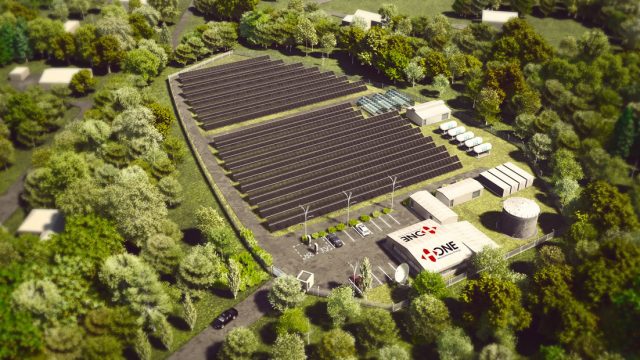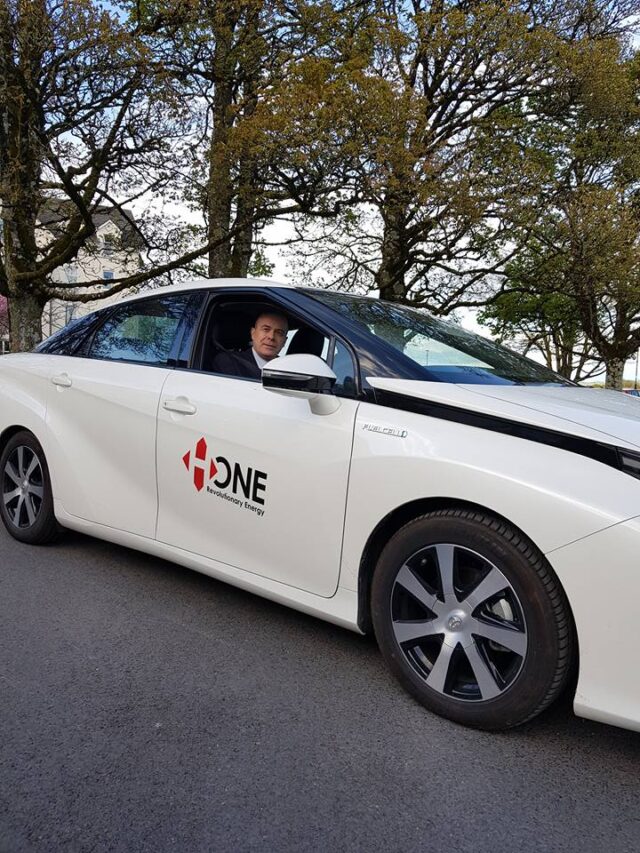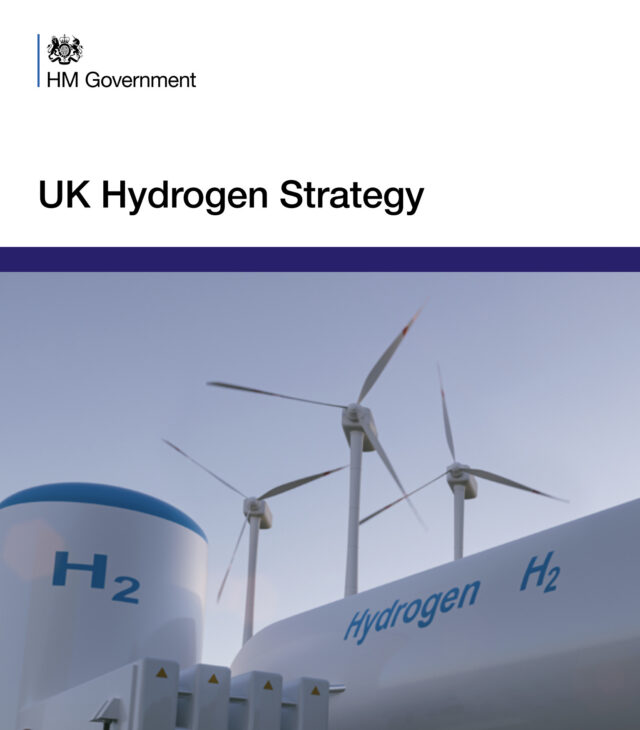Click on the image to enlarge.
Green Hydrogen is the Future
- Brief Introduction.
- What is Green Hydrogen?
- The Hydrogen Future.
- Hydrogen in Ireland and, more importantly, in Co. Mayo.
- Clean Central Heating & Transport has arrived.
- New buildings or retrofitting buildings.
- EU and UK Hydrogen Strategy.
-
Cairn Mountain, Ireland’s first green multi-energy facility with green Hydrogen at its core, will be one of the most innovative climate change projects to be developed, placing Co. Mayo at the centre of Hydrogen Innovation in Ireland.
Cairn Mountain is a demonstration energy project being developed by Photonomi Global Group, set to be deployed across several African countries, which will see supersize versions of the plant installed in potentially thousands of communities and regions.
These multi-energy plants are designed to transform towns and communities having little or poor current energy services outside mobile phone/night light solar panels or small generators into a fully western-style energy system. Carbon-free energy will include renewable heating, hot water, cooling, electricity, Hydrogen, water production & digital satellite services on a par with any modern western city. These communities will transform into carbon-free communities overnight, with services the west take for granted.
These plants will typically be 5 MW to 50 MW in size, and several plants can be linked together into multi-site stand-alone district micro-grid schemes. Expansion is by continually linking new plant sites in the same region.
What is revolutionary about these plants is that the only input fuel is daylight and air, making them the world’s most sustainable energy projects.
At the core of the project are 1,500 HONE Thermal/Electric panels, the world’s highest certified dual-energy renewable panel technology delivering seven times more kWhr output per sqm than solar PV.
The project will produce 1,500 GWhrs per MW(p) of high-temperature heat & electricity in the demonstration site and 2,600 GWhrs per MW(p) in Africa locations per year.
The services available to local communities will be 100% clean, renewable district power, air conditioning, hot water and potable water production, all distributed by local district pipes & wires.
Other services will be green Hydrogen and green electric vehicle charging for transport, available in multiple locations.
District systems will expand agricultural production, including more valuable intensive greenhouse production, with renewable heat delivered by district pipe and water harvested from air to water generators being distributed by district pipe. The water generators also manufacture water for hydrogen production from the surrounding air, where the relative humidity is 60% – 75%.
The endless energy will allow satellite links for communication, mobile phone network cell & repeaters, and education and teaching delivered from any part of the world.
Battery systems and Hydrogen will provide electricity baseload using gas to hydrogen electricity generators.
-
What is Green Hydrogen.
Green Hydrogen is a gas. It is produced by electrolysis, a straightforward process using direct current electricity and water, where the water gets separated into Hydrogen and oxygen.
Hydrogen has been around since it was discovered in the 1700s. It can be made in many ways. It is all around us, and the most common source familiar to everybody is water, which is made up of 2 parts hydrogen to 1 part oxygen. Hydrogen is also fundamental to humans in sustaining life. It can be found in large quantities when combined with other elements. In this way, Hydrogen comprises about 90% of the world’s existing atoms.
Hydrogen gas is like any other gas. It can be used to make electricity, run your central heating boiler, make ammonia. The uses for Hydrogen are endless, and when you consume Hydrogen as a fuel, you end up with clean water vapour instead of polluting emissions.
-
The hydrogen future.
You will hear many colours of Hydrogen, grey, blue, green, etc., and these reflect how Hydrogen is produced. The one that is key to our future is green Hydrogen, made from clean, renewable energy.
Additionally, Green Hydrogen means Wind Power & Solar Power is no longer beholden to the “grid” as a customer. Projects are now free to develop with or without interaction with centralised legacy systems. This also means Hydrogen will be more efficient and community-focused, with communities able to invest and reap benefits in financial terms including helping reverse climate change.
It means an end to billions of dollars of disposable income each year travelling to import faraway fossil fuel sources.
The future reality of heating your home, driving a car or making your own electricity is no longer a future reality; it is and has been happening already.
The future modern world is where we have energy democracy; you don’t want to rent your home, so why should you rent all your energy from large and soon to become costly centralised energy systems.
-
Hydrogen in Ireland and, more importantly, in Co. Mayo.
There is a multitude of hydrogen projects in the development pipeline, and Mayo is becoming a central player in this development with over 2GW of hydrogen projects in pre-planning already. While Europe and the World are rapidly developing hydrogen policy and projects, the Irish Government policy (or the lack of it) on Hydrogen is falling behind the rest of the world, who are in a race to deliver vast hydrogen projects.
At a targeted €1.50 per KG of Hydrogen, and 1KG of Hydrogen delivering 80 kms or 3.9 cents per kWh for central heating, this means it would cost you €7.50 to drive up to 400kms and €58 euros to heat a new house for the year. This type of saving whilst having zero emissions is why the race for Hydrogen is in full swing (except Ireland, of course, which has no policy on Hydrogen yet)
Nonetheless, hydrogen projects are coming regardless, and the off-grid hydrogen projects have no barriers to development.
-
Clean Central Heating & Transport has arrived.
While the UK is now pumping green Hydrogen into the natural gas grid and Germany has dedicated one giant Hydro plant to make Hydrogen its sole purpose, it is also great to see how many boiler manufacturers have released Hydrogen Boilers into the market.
And, just in case anyone thinks that moving to Hydrogen gas is a major technological leap. Natural Gas, predominantly Methane, is four parts hydrogen and one part carbon (the carbon part being the problem).
Low-cost replacements for gas and oil boilers are now arriving, and these green hydrogen boilers are more suited to delivering energy to existing buildings with simple, low-cost boiler upgrades, with only minimal home improvements required. With many Hydrogen projects in Ireland in-process and worldwide, green hydrogen supply to the masses is very close.
Lest you think Hydrogen is brand new or hasn’t arrived yet, there have been hydrogen vehicles on the roads passing you, and you may not have even noticed them.
Richard Bruton TD, Minister for Communications, Climate Action and Environment: 2018–2020 driving one of our Hydrogen Cars.
Denis Naughten TD, Minister for the Environment, Climate and Communications of Ireland 2016–2018, driving one of our Hydrogen Cars.
-
New buildings or retrofitting buildings.
What does the future perfect building look like?
It needs to do the following for it to be perfect.
-
It needs to be comfortable.
-
It needs to be wholly decarbonised, clean heating, clean power & clean transport
-
It needs to be simple.
-
It needs to have low running costs.
-
It needs to have virtually no maintenance cost.
-
The solutions must have a long life.
To achieve this, buildings will need to make much of their energy onsite with the buildings own renewable energy systems and have it backed up by Hydrogen heating/hot water.
Existing oil & gas boilers can be switched out for a hydrogen boiler soon and coupled with your renewable systems. This will deliver you low annual energy bills and future proof your building or home.
-
EU and UK Hydrogen Strategy.
European Green Deal…
The EU hydrogen strategy is part of the European Green Deal and provides for three phases:
- By 2024, the production of green Hydrogen should increase to one million tons per year;
- By 2030, the production of green Hydrogen should increase to ten million tons per year;
- From the period between 2030 and 2050, green Hydrogen is to be produced on a systemically relevant scale.
(For comparison: at present, almost 10 million tons of Hydrogen per year are produced in the EU from and with fossil fuels).
The EU hydrogen strategy is supported e. g. by the Netherlands, which in connection with the end of the production of natural gas from the Groningen gas field is looking for alternative uses for its existing natural gas infrastructure, and by Germany, which had already presented its national hydrogen strategy in June 2020.
EU HYDROGEN PAPER DOWNLOAD HERE
By 2024, the production of green Hydrogen should increase to one million tons per year;
The UK also has a strong Hydrogen strategy and policy in place.
Working with industry, the UK’s ambition is for 5GW of low carbon hydrogen production capacity by 2030 for use across the economy.
Click on the image below for the full document.




